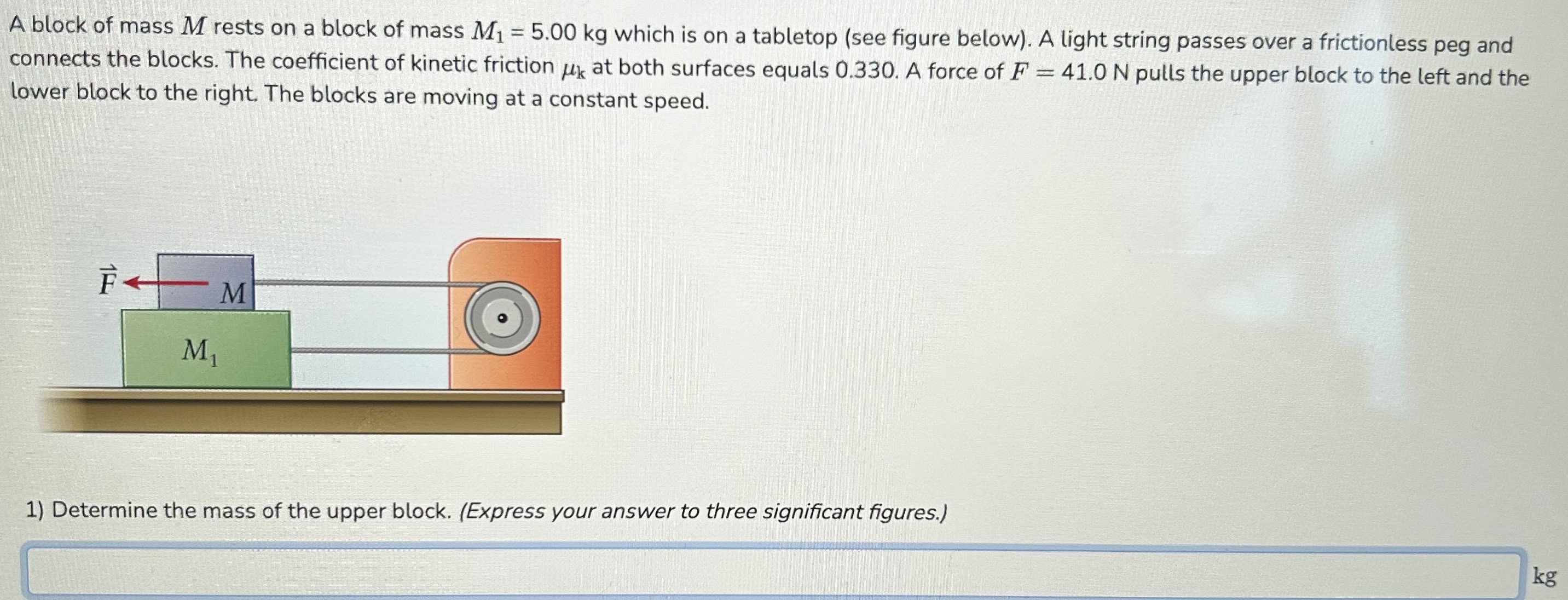A block of mass M rests on a block of mass M1 = 5.00 kg which is on a tabletop (see figure below). A light string passes over a frictionless peg and connects the blocks. The coefficient of kinetic friction μk at both surfaces equals 0.330. A force of F = 41.0 N pulls the upper block to the left and the lower block to the right. The blocks are moving at a constant speed. Determine the mass of the upper block. (Express your answer to three significant figures.) kg
